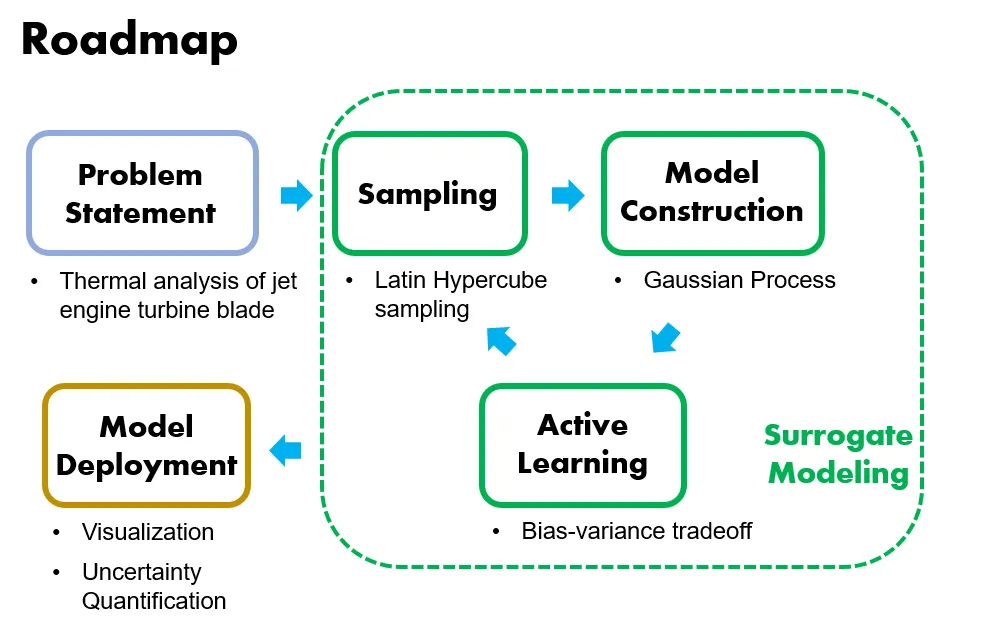In part I of this series, we’ve introduced the idea of using surrogate models to accelerate simulation-based product design processes. This is achieved by training a statistical model to serve as a cheap yet accurate _surrogate _to the simulations in performing various design tasks, therefore significantly improving the analysis efficiency.
In part II, we will go through a case study to demonstrate how to use surrogate models in practice. The roadmap for this case study is shown below:
We will start by introducing the problem’s physical background, followed by applying the surrogate modeling technique to the problem. Finally, we will illustrate how to use the trained surrogate model to perform two types of analysis.
In part III of this series, we will briefly discuss some advanced concepts to enhance surrogate modeling capability further.
Let’s get started!
#data-science #machine-learning #modeling #statistical-analysis #surrogate-modeling
